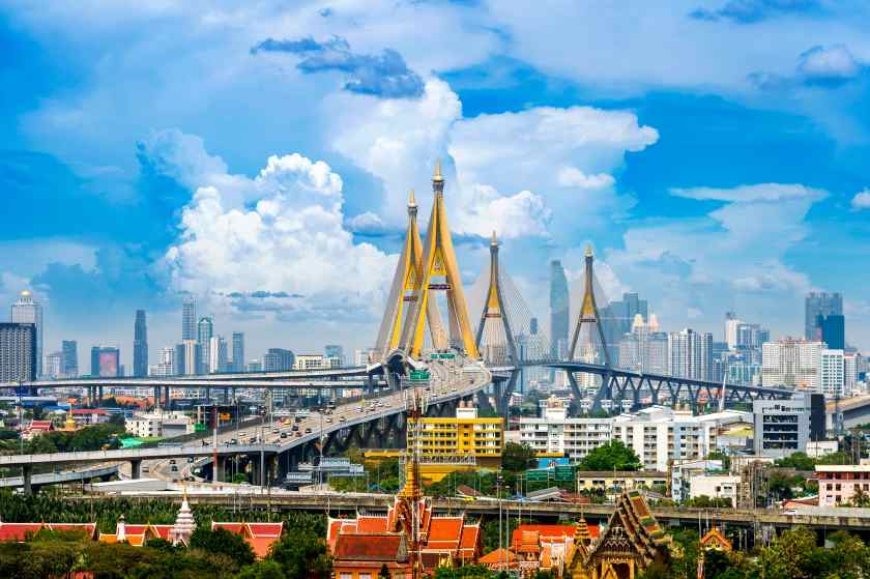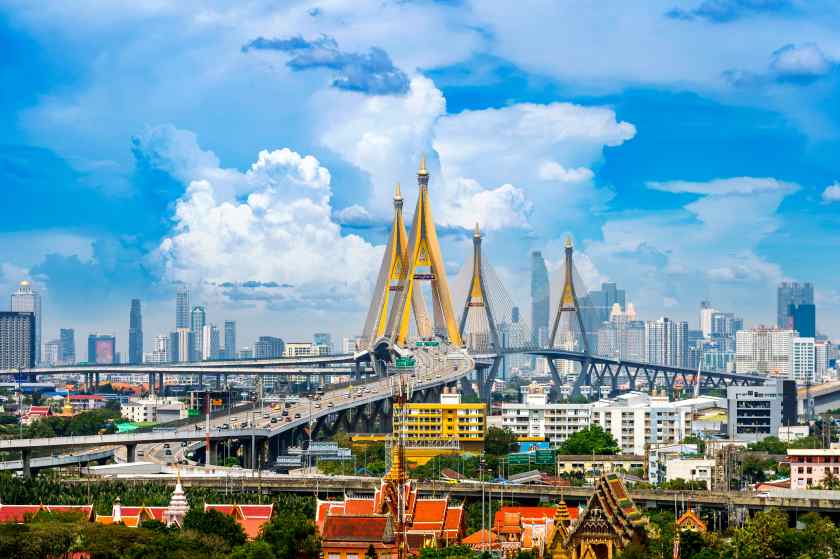Now, With One Hundred and Thirteen Airlines, Suvarnabhumi Airport Becomes Southeast Asia’s Top Gateway for International Tourism


Suvarnabhumi Airport in Bangkok has claimed the title of the world’s most airline-connected airport, according to figures published in April 2025. The facility now hosts scheduled services from 113 airlines, overtaking Paris Charles de Gaulle Airport, which has 105. This advancement solidifies Suvarnabhumi’s status as an increasingly vital global aviation hub, luring a wide array of international carriers and reinforcing its function as the principal entry point to Southeast Asia. The statistics, assembled by Brilliant Maps working with FlightConnections, track the world’s busiest aviation nodes by the number of airlines using them. Suvarnabhumi’s ascent to the top position not only underscores the airport’s unparalleled connectivity but also affirms Thailand’s emerging influence in the international aviation landscape.
Suvarnabhumi Airport, known to frequent flyers as BKK after its IATA code, sits about 25 kilometers to the east of central Bangkok, fully within the Samut Prakan Province. As the principal hub for Thai Airways International, the airport links Bangkok to 151 destinations spanning Asia, Europe, the Middle East, and Oceania, and it greets more than 51 million travelers every year. Visitors are struck by the airport’s harmonious fusion of sleek modern lines and traditional Thai elements, offering a fitting welcome to those arriving in the capital.
Tourism Boost:
Now ranked as the world’s most extensively connected airport, Suvarnabhumi has strengthened its position within global aviation. It serves as the principal doorway for travelers bound for Thailand and a major transit point for Southeast Asia. Averaging 484 scheduled departures each day, the airport enables seamless long-haul connections, serving both leisure and business travelers eager to reach markets across the globe.
Suvarnabhumi’s expansion plans underscore its ambition to stay ahead of ever-rising demand. Once early expansion brought capacity to 61 million, passenger volume has still climbed to 51 million, far exceeding early forecasts. Authorities are therefore pushing forward with terminal upgrades, runway enhancements, and improved landside access, each designed to lift capacity and streamline services without compromising customer experience.
The centerpiece of this growth is a new third passenger terminal, poised to distribute traffic more evenly across check-in, security, and boarding. By integrating the latest technologies and more gate and baggage-handling capacity, this addition will solidify Suvarnabhumi’s efficiency and resilience, anticipating passenger volumes that the latest forecasts consistently upward.
Thailand Tourism:
For Thailand, the airport is more than a transport node; it is a backbone of the economy. Its 90,000 staff, expansive duty-free shop floors, and the transit of 29 million visitors each year link global markets. Tourists traveling to Bangkok’s heritage, and leisure-rich neighboring provinces show the airport’s role in crafting regional itineraries and revenue streams that support jobs and infrastructure across the nation.
Thailand’s ongoing expansion of its tourism sector positions Suvarnabhumi Airport as the gateway for visitors arriving from every corner of the planet. Its extensive flight network allows passengers to move seamlessly to the country’s iconic destinations—whether the beaches of Phuket, the mountains of Chiang Mai, the resorts of Pattaya, or the historic temples of Ayutthaya. Beyond national borders, the airport strengthens the regional tourism circuit, offering convenient onward flights to neighboring capitals like Hanoi, Kuala Lumpur, Singapore, and Jakarta.
The airport’s importance extends well beyond leisure travel. Bangkok’s central geographical advantage in Southeast Asia has established the city as the preferred venue for international conventions, trade fairs, and corporate gatherings. As such, Suvarnabhumi acts as the keystone logistics point that links Thailand’s economy with global markets.
Rivalry Among Leading Hubs
Rising to the title of the most airline-connected airport in the world, Suvarnabhumi has done so in a crowded and competitive arena of global hubs. Paris Charles de Gaulle, London Heathrow, and Dubai International—each boasting enormous terminal capacity, a vast array of carriers, and multimillion passenger volumes—remain benchmarks of complexity and scale. Surpassing Charles de Gaulle in the total number of airlines served underscores Southeast Asia’s growing prominence in the global aviation choreography and the gradual shift of travel flows toward this dynamic region.
Moreover, Dubai International Airport retains its title as the leading airport for international travellers, underlining the rivalry among premier global air travel centres. Yet Suvarnabhumi Airport distinguishes itself through broadening links to nearby markets as well as newly popular long-haul choices.
Suvarnabhumi’s Path to Global Leadership
Having recently been named the airport with the densest airline network in the world, Suvarnabhumi is charting a course for ongoing prominence. Steady expansion, a vast international network, and climbing passenger numbers combine to keep Bangkok at the heart of Southeast Asia’s aviation scene.
Both the Thai government and aviation regulators are injecting capital into modernising facilities, with a strong emphasis on green practices and digital innovation. These initiatives are meant to make sure Suvarnabhumi keeps pace as one of the globe’s most interconnected and agile airports, ready to handle rising traffic and the shifting agenda of the global airline sector.
Conclusion
Suvarnabhumi Airport earning the distinction of the planet’s most widely connected airport marks a defining moment in its evolution into a global aviation cornerstone. Serving as Thailand’s primary aerial gateway, the airport underpins the sustained growth of the tourism sector and the spread of regional commerce. Coupled with its robust expansion programme and a commitment to state-of-the-art service, Suvarnabhumi is poised to further consolidate its position, linking millions of passengers to Thailand and to a fast-growing Southeast Asian network.
The post Now, With One Hundred and Thirteen Airlines, Suvarnabhumi Airport Becomes Southeast Asia’s Top Gateway for International Tourism appeared first on Travel And Tour World.






